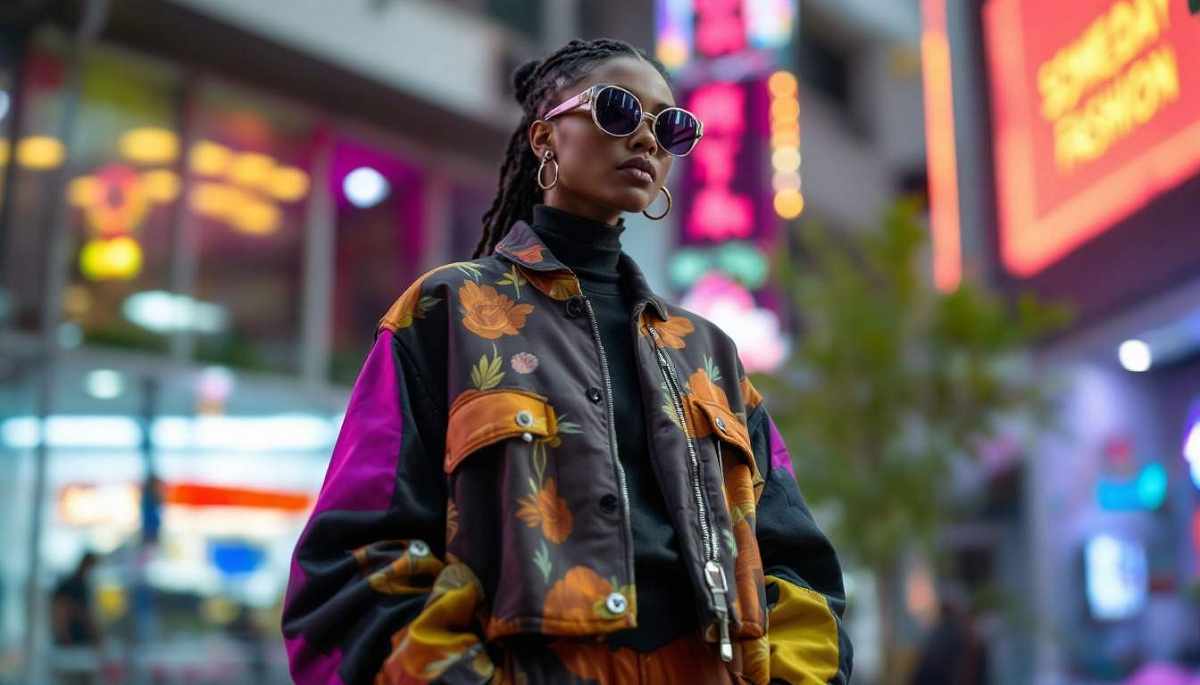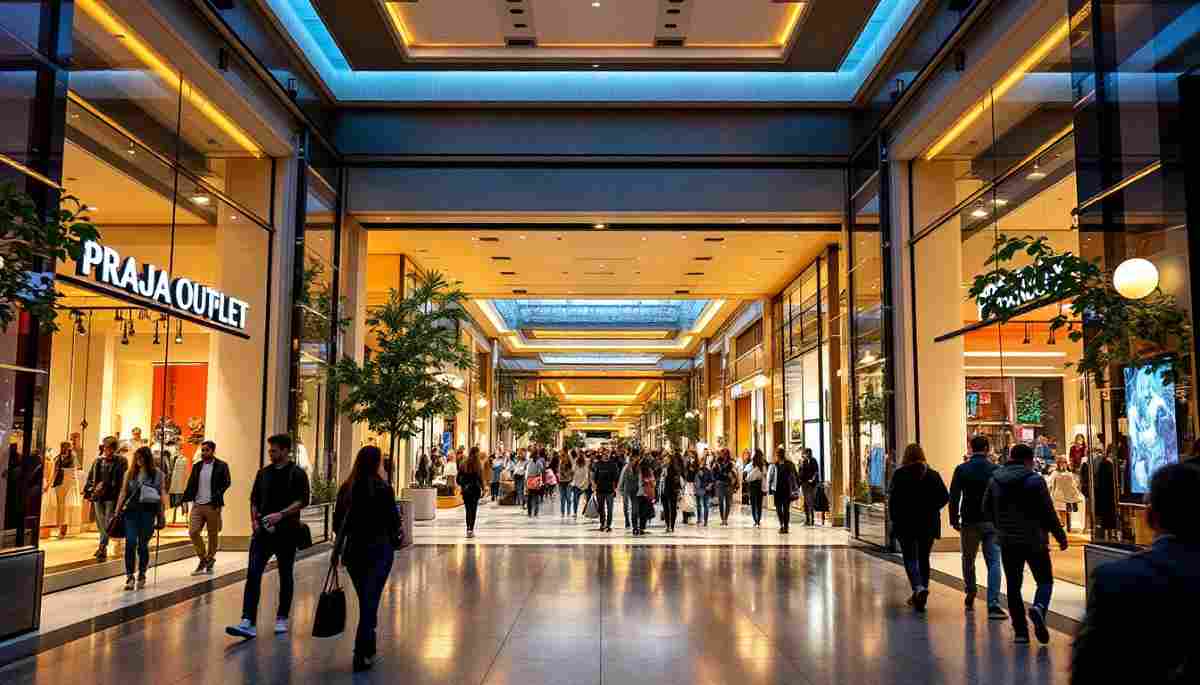Fashion is an ever-evolving industry, influenced by a myriad of factors ranging from culture to technology. As we look ahead, the concept of ‘someday fashion’ embodies not only the styles we can expect to see but also the values we hold dear. This exploration delves into key elements that will shape the future of fashion, inviting readers to consider how these changes might manifest.
The Evolution of Fashion: What ‘Someday’ Looks Like
As we move forward, the evolution of fashion continues to capture our imagination. Today’s trends often take cues from the past, adapting and transforming them into something uniquely suited for the present. The term someday embodies the anticipation of these transformations, where innovation meets tradition.
Fashion houses are increasingly embracing fluidity, allowing for styles that defy conventional categorization. This evolution points toward a future where personal expression is paramount, and the lines between gendered clothing continue to blur.
Moreover, the rapid pace of societal change ensures that fashion remains a dynamic reflection of our collective consciousness. As cultures interact more than ever, we may see a hybridization of styles that celebrate international influences.
In this ever-evolving landscape, sustainability has emerged as a crucial pillar of ‘someday fashion.’ Designers are now prioritizing eco-friendly materials and ethical production methods, recognizing the responsibility they hold in combating climate change. This shift not only influences the types of fabrics used but also encourages a circular approach to fashion, where recycling and upcycling become integral to the design process. As consumers become more conscious of their purchasing decisions, brands that champion sustainability are likely to thrive, leading to a future where fashion is not only stylish but also responsible.
Additionally, technology is playing a transformative role in shaping the future of fashion. The rise of virtual reality and augmented reality is changing how we experience clothing, allowing for immersive shopping experiences that were once unimaginable. Imagine trying on outfits in a virtual space from the comfort of your home or customizing garments with just a few clicks. This technological integration not only enhances consumer engagement but also opens up new avenues for creativity in design, enabling fashion designers to experiment with forms and functions that push the boundaries of traditional garment construction.
Trends on the Horizon: Predictions for Future Styles
Fashion forecasting has become an art unto itself, combining insights from cultural studies, technology, and consumer behavior. Experts predict a shift towards minimalism, with functional and versatile pieces taking the spotlight. This trend is partly influenced by our growing awareness of sustainability and the desire to reduce waste. As consumers become more conscientious about their purchasing decisions, brands are responding by creating timeless designs that can be worn across seasons, minimizing the need for constant shopping.
Color palettes are expected to reflect our mood swings, with shades that evoke calmness and positivity gaining traction. Furthermore, patterns that tell stories or honor cultural heritage may become increasingly popular, offering consumers a deeper connection to their garments. This resurgence of storytelling in fashion allows designers to weave narratives into their collections, drawing inspiration from folklore, art, and even personal experiences. As a result, clothing transforms into a canvas for expression, inviting wearers to embrace their unique journeys.
Another prediction highlights the growing importance of DIY culture; customers will increasingly customize and personalize their clothing, amplifying the concept of individuality in fashion. This shift not only empowers consumers but also fosters a sense of community as people share their creations and techniques through social media platforms. Workshops and online tutorials are likely to flourish, enabling enthusiasts to learn skills ranging from embroidery to upcycling, thus further bridging the gap between fashion and personal expression. The rise of 3D printing technology may also revolutionize this trend, allowing individuals to create bespoke pieces tailored to their specific tastes and measurements.
Sustainable Fashion: A Look at Eco-Friendly Innovations
Sustainability has become a cornerstone of meaningful fashion, with brands striving to implement eco-friendly practices. The next phase of this journey involves innovative materials, such as lab-grown fabrics and biodegradable components, poised to reduce the industry’s environmental footprint. These materials not only minimize waste but also offer consumers high-performance alternatives that can rival traditional textiles in terms of durability and comfort. For instance, companies are now experimenting with fabrics derived from agricultural waste, such as orange peels and coffee grounds, which not only utilize resources that would otherwise go to waste but also reduce the need for virgin materials.
Brands will likely adopt circular fashion principles, emphasizing recycling and upcycling as essential components of their business models. This shift not only respects the planet but also encourages a new way of thinking about clothing consumption. By designing garments that can be easily disassembled and repurposed, brands are paving the way for a future where clothing has a longer life cycle. Moreover, initiatives like take-back programs and repair services are gaining traction, allowing consumers to return their used items for recycling or refurbishment, thus fostering a culture of sustainability that extends beyond the initial purchase.
Collaborations between designers and environmentalists are cropping up, resulting in creations that are as stylish as they are sustainable. In the coming years, this intersection of fashion innovation and environmental stewardship will define our wardrobes. Notably, some brands are partnering with local artisans to create limited-edition pieces that highlight traditional craftsmanship while using sustainable materials. This not only supports local economies but also tells a story of heritage and responsibility, connecting consumers to the origins of their clothing in a meaningful way. As these partnerships flourish, they will undoubtedly inspire a new generation of designers to prioritize the planet in their creative processes.
The Role of Technology in Shaping Tomorrow’s Wardrobes
Technology is perhaps one of the most significant forces shaping the future of fashion. From augmented reality shopping experiences to smart textiles that adapt to temperature changes, technology is revolutionizing how we engage with and purchase clothing.
E-commerce continues to evolve, allowing for personalized shopping experiences powered by AI algorithms. These advancements not only enhance customer experience but also streamline supply chains, making the fashion world more efficient.
The integration of virtual reality in fashion shows and showcases will also redefine how consumers experience fashion events. As brands reach wider audiences through digital platforms, the traditional barriers of time and space will gradually dissolve.
Cultural Influences: How Global Trends Will Define Future Fashion
Cultural exchange enriches the fashion landscape, and as we look to the future, cross-cultural influences will shape what we wear. The globalization of fashion will bring diverse perspectives and styles, enriching our wardrobes.
Future fashion may increasingly borrow from indigenous designs and techniques, placing value on authenticity and craftsmanship. This blending of cultures not only honors artistic traditions but also offers a platform for dialogue and understanding.
Social movements and advocacy will also play a pivotal role in determining the trajectory of fashion trends. As consumers align themselves with brands that reflect their values, we will see increased emphasis on messaging and storytelling within clothing lines.
The Rise of Virtual Fashion: Dressing in the Digital Age
With the rise of social media and online platforms, virtual fashion is set to make waves in how we perceive clothing. Digital clothing, which can be worn in virtual environments or through social media avatars, will become increasingly mainstream.
This shift is not merely about aesthetics; it challenges our understanding of ownership and consumption. As people explore virtual wardrobes, traditional buying habits may be questioned, leading to a new paradigm in how we define style.
In an age where experiences often surpass material possessions, virtual fashion allows for innovative self-expression without the environmental impact associated with physical clothing production.
Inclusivity and Diversity: Fashion’s Future for All Bodies
The fight for inclusivity in fashion is gaining momentum, making significant strides toward an industry that celebrates diversity in all forms. The future of fashion will likely see a broader representation of body types, genders, and ethnicities.
Brands will prioritize fitting ranges that cater to a wide array of consumers, fostering a culture of acceptance and affirmation. Moreover, the push for representation will influence marketing campaigns, ensuring that all voices and stories are heard.
As fashion embraces inclusivity, it will lead to deeper conversations about beauty standards and cultural perceptions, fostering a more equitable industry where everyone feels valued.
The Impact of Climate Change on Fashion Choices
The urgency of climate change is reshaping consumer behavior, leading individuals to make more conscious fashion choices. In response to the devastating impact of fast fashion, many shoppers are turning to second-hand purchases and sustainable brands.
This shift signifies not just a change in shopping habits, but a cultural reckoning—consumers are now more empowered and vocal about their expectations from brands regarding environmental responsibility.
As climate awareness continues to rise, we can anticipate a significant transformation in fashion marketing and production strategies. Brands that prioritize eco-conscious methodologies will not only thrive but also reshape the industry standard going forward.
Nostalgia Meets Innovation: Reviving Past Trends for the Future
Nostalgia has a remarkable ability to inspire creativity in fashion. As we consider ‘someday fashion’, it becomes clear that past trends can be reinterpreted in innovative ways that resonate with new generations.
Designers are increasingly drawing inspiration from various epochs—be it the flair of the 70s or the bold aesthetics of the 90s—to create contemporary pieces. This revival is not about imitation but rather about recontextualization, allowing old favorites to be expressed in fresh ways.
The blending of nostalgia with modern sensibilities suggests a yearning for comfort in turbulent times, where familiar styles can provide a sense of reassurance alongside their new-age adaptations.
The Consumer’s Voice: How Shoppers Will Shape ‘Someday’ Fashion
The ultimate arbiter of fashion’s future lies in the hands of the consumers. As shoppers become more informed and conscientious, their purchasing power will shape industry trends. The demand for transparency, ethical practices, and personalization will dictate how brands evolve.
Informed consumers are vocal about their choices, leading brands to prioritize participatory approaches in design and production. The days of passive consumption are fading, and the empowered shopper is now a collaborator in the fashion narrative.
As we look to the future, the voice of the consumer will be the driving force behind a fashion landscape that is adaptive, inclusive, and representative of the diverse world we live in.










